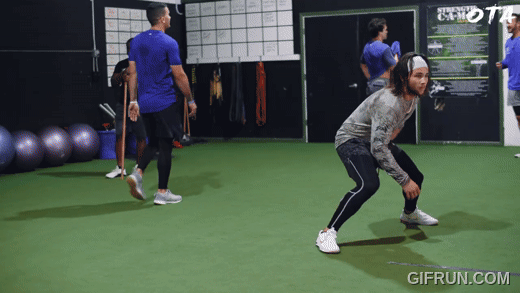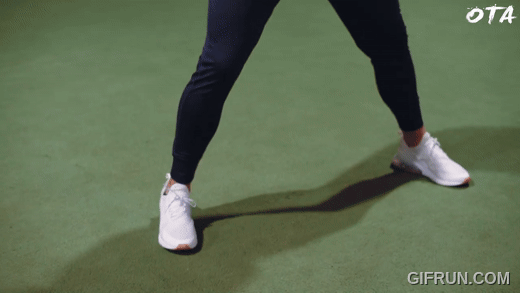Instantly Improve Your 60-Yard Dash
When it comes to showcasing your speed, few drills are as universally recognized as the 60-yard dash. Whether you’re preparing for a baseball showcase, scouting event, or simply want to improve your sprinting ability, shaving time off your 60-yard dash can make a big difference. While many focus on running technique or specific speed drills, one of the most overlooked areas of improvement is the setup. In this post, we’ll break down Chris Bonner’s approach to instantly improving your 60-yard dash, focusing on the start and the key mechanics that allow you to explode out of the gate with speed and power.
Improving Your 60-Yard Dash: Why the Setup Matters
Chris Bonner, a coach at Overtime Athletes, specializes in improving athletic performance, and when it comes to the 60-yard dash, he emphasizes the importance of focusing on your start and setup. It’s easy to get caught up in the belief that speed is all about running mechanics and drills. While those are essential, Bonner stresses that a significant portion of your sprinting performance stems from how efficiently you set up at the start.
Think of the 60-yard dash as a race to see who can get from point A to point B the fastest. The first few steps are crucial, as they set the tone for the rest of the sprint. If your setup is inefficient, even the best running mechanics can’t save you. Improving your start means improving your entire 60-yard dash time. For athletes aiming to steal bases or improve their overall speed, refining your setup can lead to faster acceleration and quicker reactions. By focusing on these key elements, you can improve your time almost instantly.
Efficient Stance Setup: Avoid Being Too Square
A common mistake athletes make when preparing for a 60-yard dash is setting up too square. A square stance may feel natural, but it isn’t the most efficient way to start your sprint. When you’re square, you’re limiting your ability to drive forward efficiently, and this can waste precious time right from the beginning.
Bonner’s first tip for a better start is to open up the front foot. Most athletes make the mistake of keeping their toes facing forward, which results in an inefficient movement as they try to turn their body into a sprint. To improve your setup, position your front foot at a 45-degree angle in the direction you’re running. This slight shift in foot positioning opens up your hips and allows you to begin your sprint with a smoother and more direct line of movement.
Opening your front foot is essentially like setting up an arrow in a bow. If there are kinks or bends in the bowstring, the arrow won’t fly as straight or as fast. Similarly, if your stance is inefficient, you’ll lose speed during the critical first few yards. By simply adjusting your front foot, you eliminate that wasted motion and increase your chances of a faster takeoff.

Back Leg Adjustment: Set Up for a Better Crossover
The next element that impacts your 60-yard dash time is the position of your back leg. Many athletes set up with their feet perfectly aligned, with their toes facing straight ahead. While this might seem like a stable position, it actually makes it harder for your back leg to cross over and propel you forward in the early steps of your sprint.
Bonner suggests slightly cheating the back foot to the middle. This adjustment allows your back leg to move more freely and helps you cross over with more efficiency during the first few steps. Instead of wasting time trying to twist and turn your body in a cramped, square stance, you create a natural path for your back leg to follow as you sprint. The result is a smoother and more powerful push-off.
The key here is creating more natural movement, and this adjustment is simple yet effective. By positioning the back foot slightly to the side, your body has more room to engage the proper muscles and move efficiently through the first 10 yards of the 60-yard dash. You’ll notice that the entire process feels smoother, and your body will naturally accelerate more quickly.
Proper Hip Loading: Don’t Tip Forward on Your Toes
One of the biggest mistakes athletes make when preparing to sprint is tipping forward onto their toes. When you’re on your toes, you’re not in an optimal position to push off the ground and generate the maximum amount of force needed to explode down the line. The key to unlocking your speed lies in loading your hips properly.
Bonner explains that instead of leaning forward onto your toes, you should sit your hips back and down, loading the entire inside of your back foot. By doing this, you engage the proper muscles in your glutes and hamstrings, setting yourself up for a more powerful and efficient takeoff.
Imagine, for a moment, that you’re about to jump into a pool. You wouldn’t start by being on your toes, right? You’d load your hips back to create the most powerful push-off. The same concept applies when sprinting. If you can imagine diving into a pool in the direction you’re about to sprint, you’ll understand the importance of setting up your body in a position that maximizes force and speed. The more you focus on setting your body up in a mechanically advantageous position, the quicker you’ll be able to accelerate and get down the line.

False Step vs Plyo Step: Efficiency is Key
Lastly, Bonner addresses the ongoing debate between false steps and plyometric steps (plyo steps). A plyo step involves lifting the foot slightly off the ground during the start, while a false step occurs when an athlete’s hips travel backward before moving forward. While there’s no one-size-fits-all answer, Bonner emphasizes that efficiency is key.
A plyometric step can be useful if the hips are slightly lifted, allowing for a more powerful push. However, if lifting the foot causes unnecessary backward movement of the hips, it can slow you down. The main focus should always be avoiding any unnecessary movements. If lifting the foot helps you engage the proper muscles and generate more force, that’s fine. But if it causes your body to lose momentum and efficiency, it’s time to adjust.
The takeaway here is simple: aim to eliminate inefficiency. Whether you keep your foot down or slightly lift it, the goal is to ensure that your body is moving forward with minimal wasted motion. A clean, efficient start will always lead to better results.
Conclusion: Set Yourself Up for Success
Improving your 60-yard dash time is all about optimizing your start and setup. By focusing on these key areas—stance, back leg positioning, hip loading, and avoiding inefficient steps—you can immediately decrease your 60-yard dash time and improve your speed. Whether you’re preparing for a showcase or looking to steal more bases, applying these adjustments will set you up for success.
Remember, speed isn’t about doing complex drills or having perfect running form from the get-go. It’s about how efficiently you move from point A to point B, and the start is where that efficiency begins. By following these tips, you’ll be well on your way to running a faster 60-yard dash in no time!
